|
Books Should Be Free Loyal Books Free Public Domain Audiobooks & eBook Downloads |
|
|
Books Should Be Free Loyal Books Free Public Domain Audiobooks & eBook Downloads |
|
Short Stories |
|---|
|
Book type:
Sort by:
View by:
|
By: Alphonse Daudet (1840-1897) | |
|---|---|
 Monday Tales
Monday Tales
This is a collection of short stories by Alphonse Daudet. The stories paint an incredibly vivid picture of life in continental Europe before the turn of the last century. The settings of the stories also take us all over France, Belgium, and Germany, with little excursions also outside of those countries. The spirit of Europe of the 19th century is palpable, and described in a way few writers can. - Summary by Carolin | |
By: Ambrose Bierce (1842-1914?) | |
|---|---|
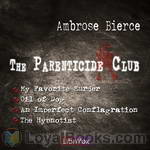 The Parenticide Club
The Parenticide Club
Ambrose Bierce (1842 – 1914?), best known as journalist, satirist and short story writer. Cynical in outlook, economical in style; Bierce vanished while an observer with Pancho Villa’s army. Four grotesque short stories about murder within the family, seen through the gently innocent eyes of family members … usually the murderer himself.My favorite murder (00:23)Oil of Dog (20:13)An Imperfect Conflagration (29:32)The Hypnotist (37:14) | |
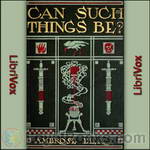 Can Such Things Be?
Can Such Things Be?
24 short stories in fairly typical Bierce fashion - ghostly, spooky, to be read (or listened to) in the dark, perhaps with a light crackling fire burning dimly in the background. Stories of ghosts, apparitions, and strange, inexplicable occurrences are prevalent in these tales, some of which occur on or near Civil War fields of battle, some in country cottages, and some within urban areas. Can Such Things Be? implies and relates that anything is possible, at any time. | |
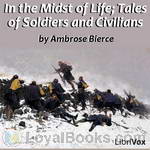 In the Midst of Life; Tales of Soldiers and Civilians
In the Midst of Life; Tales of Soldiers and Civilians
These stories detail the lives of soldiers and civilians during the American Civil War. This is the 1909 edition. The 1909 edition omits six stories from the original 1891 edition; these six stories are added to this recording (from an undated English edition). The 1891 edition is entitled In The Midst Of Life; Tales Of Soldiers And Civilians. The Wikipedia entry for the book uses the title Tales of Soldiers and Civilians. Ambrose Gwinnett Bierce (June 24, 1842 – after December 26, 1913) was an American editorialist, journalist, short story writer, fabulist and satirist... | |
By: Amy Walton (1848-1899) | |
|---|---|
 Kitchen Cat and Other Stories
Kitchen Cat and Other Stories
These are three stories that will delight your heart and soul. The little girl Ruth in the first story is very privileged young lady with everything she could wish for except,of course, for companionship. Her mother has passed away and her father is a very busy lawyer who barely notices she is there. But then Ruth finds a scruffy, skinny and mostly ugly cat; the cat who lives in the kitchen and cellars,hence The Kitchen Cat. Her attempts to befriend this stray despite insurmountable obstsacles make this story a really heart warming tale... | |
By: Andrew Lang (1844-1912) | |
|---|---|
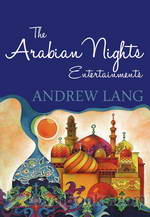 The Arabian Nights
The Arabian Nights
The Arabian Nights is a collection of Perso-Arabic folk tales and other stories. The collection, or at least certain stories drawn from it (or purporting to be drawn from it), became widely known in the West from the 18th century, after it was translated from the Arabic — first into French and then into English and other European languages. The first English language edition, based on Galland’s French rather than the original Arabic, rendered the title as The Arabian Nights’ Entertainment – and this, or simply The Arabian Nights, has been the title by which it has been best known to English-speaking people ever since. | |
 The Pink Fairy Book
The Pink Fairy Book
All people in the world tell nursery tales to their children, and the stories are apt to be like each other everywhere. A child who has read the Blue and Red and Yellow Fairy Books will find some old friends with new faces in the Pink Fairy Book. Courage, youth, beauty, kindness, have many trials, but they always win the battle; while witches, giants, unfriendly cruel people, are on the losing hand. So it ought to be, and so, on the whole, it is and will be; and that is all the moral of fairy tales... | |
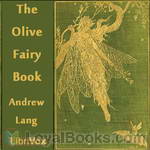 The Olive Fairy Book
The Olive Fairy Book
Andrew Lang’s Olive Fairy Book (1907) was a beautifully produced and illustrated edition of fairy tales that has become a classic. This was one of many other collections of fairy tales, collectively known as Andrew Lang’s Fairy Books. | |
By: Anna Katharine Green (1846-1935) | |
|---|---|
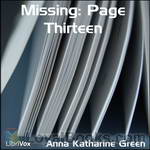 Missing: Page Thirteen
Missing: Page Thirteen
Violet Strange, a clever petite detective, is called upon to solve the mystery of a page gone missing from an important document. The futures of several people, including an eccentric misanthrope, a chemical scientist, a bride and groom, depend on the quick resolution of this problem. In solving one mystery, she uncovers another which dates back many years. | |
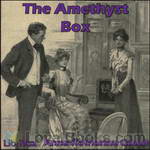 The Amethyst Box
The Amethyst Box
On the evening before his marriage, Sinclair loses a precious curiosity from his collection: an amethyst box, containing a tiny flask of deadly poison. He suspects that this poison is in the possession of either his betrothed or her cousin, the girl his best friend Worthington loves. Turning to Worthington for help, they try to recover the box before the poison can be administered... | |
By: Anne Wales Abbott ed. (1808-1908) | |
|---|---|
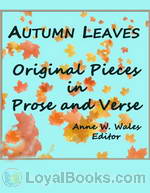 Autumn Leaves, Original Pieces in Prose and Verse
Autumn Leaves, Original Pieces in Prose and Verse
The pieces gathered into this volume were, with two exceptions, written for the entertainment of a private circle, without any view to publication. The editor would express her thanks to the writers, who, at her solicitation, have allowed them to be printed. They are published with the hope of aiding a work of charity,—the establishment of an Agency for the benefit of the poor in Cambridge,—to which the proceeds of the sale will be devoted. | |
By: Anonymous (1821-1890) | |
|---|---|
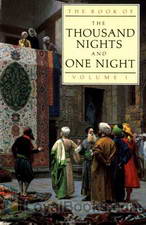 The Book of A Thousand Nights and a Night
The Book of A Thousand Nights and a Night
This is a collection of stories collected over thousands of years by various authors, translators and scholars. The are an amalgam of mythology and folk tales from the Indian sub-continent, Persia, and Arabia. No original manuscript has ever been found for the collection, but several versions date the collection’s genesis to somewhere between AD 800-900. The stories are wound together under the device of a long series of cliff-hangers told by Shahrazad to her husband Shahryar, to prevent him from executing her... | |
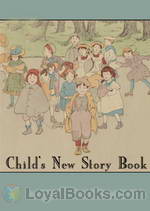 Child’s New Story Book
Child’s New Story Book
Short and sweet stories for children. | |
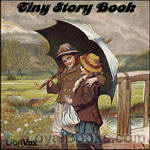 Tiny Story Book
Tiny Story Book
Short and sweet stories for children. | |
 Incidents of Childhood
Incidents of Childhood
Short stories for children that hide practical lessons within charming glimpses of life in England in the Early 19th Century. | |
By: Anstey, F. (1856-1934) | |
|---|---|
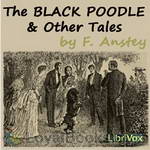 The Black Poodle and Other Tales
The Black Poodle and Other Tales
This is a collection of ten humorous short stories | |
By: Anthony Trollope (1815-1882) | |
|---|---|
 Aaron Trow
Aaron Trow
What is it like to be a fox hunted by hounds? We find out through the senses of an escaped convict as he struggles to free himself from would-be captors. The struggle is brutal. In the end, we are left wondering which person really wins--the pursued or the pursuer. Or perhaps which one is now the pursuer, which the pursued. | |
 Editor's Tales
Editor's Tales
These 'tales' describe a series of encounters between various magazine editors and those who wish to have their works published. While containing some amusing bits, the tales are relatively grim, compared to most Trollope stories. The Turkish Bath: This editor, visiting a Turkish bath, is accosted by an Irish stranger, who, after some conversation, requests to submit a manuscript to the magazine. The editor's reactions to the solicitation and subsequent familiarity with the writer's circumstances forms the frame of the story... | |
 Why Frau Frohmann Raised Her Prices and Other Stories
Why Frau Frohmann Raised Her Prices and Other Stories
A collection of five stories by Anthony Trollope: Why Frau Frohmann Raised Her Prices; The Lady of Launay; Christmas at Thompson Hall; The Telegraph Girl; and Alice Dugdale | |
By: Anton Chekhov (1860-1904) | |
|---|---|
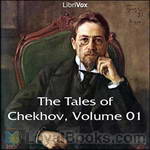 The Tales of Chekhov
The Tales of Chekhov
This is the first of thirteen volumes of Anton Chekhov’s short stories, translated by Constance Garnett. Anton Chekhov was a Russian doctor who turned to fiction as a hobby, and quickly blossomed into one of the masters of the short story genre. Though he is arguably best known for his dramatic works, such as The Cherry Orchard, his stories are widely considered to be some of the most perfect examples of short fiction ever written. Constance Black Garnett was an English housewife who taught herself Russian as a hobby, and subsequently introduced the English-speaking world to some of the greatest Russian authors, including Chekhov and Dostoevsky... | |
 House With The Mezzanine And Other Stories
House With The Mezzanine And Other Stories
Six short stories and a novella by the Russian master. (david wales) | |
 Kashtanka
Kashtanka
"Kashtanka," a shaggy-dog story penned by Anton Chekhov in seven parts and first published in 1887, relates the experiences of its eponymous heroine, a fox-faced, reddish dachshund-mix, whose name means 'little chestnut.' After her detestation of music causes her to become separated from the carpenter with whose family she had been living, Kashtanka finds herself taken up by an unusual vaudevillian and goes to live among an assortment of other intelligent animals, each of whom is observed with the characteristic empathy and humor that stamp Chekhov's work. | |
By: Arnold Bennett (1867-1931) | |
|---|---|
 Tales of the Five Towns
Tales of the Five Towns
This is a selection of short stories recounting, with gentle satire and tolerant good humour, the small town provincial life at the end of the nineteenth century, based around the six towns in the county of Staffordshire, England, known as the Potteries. Arnold Bennett chose to fictionalize these towns by changing their names and omitting one (Fenton) as he apparently felt that “Five Towns” was more euphonious than “Six Towns”. The real town names which are thinly disguised in the novel are: Hanley, Longton, Burslem and Tunstal, the fifth, Stoke became “Knype”... | |
 Matador of the Five Towns and Other Stories
Matador of the Five Towns and Other Stories
Twenty-two short stories by Arnold Bennett, mainly set in the 'Five Towns', Bennett's name for the pottery manufacturing towns of the English midlands | |
By: Arthur B. Reeve (1880-1936) | |
|---|---|
 Poisoned Pen
Poisoned Pen
The many adventures of Professor Craig Kennedy were chronicled by Arthur B. Reeve (October 15, 1880 - August 9, 1936). Reeve was an American mystery writer who created 82 Craig Kennedy mystery stories. The stories have a very Sherlock Holmes type feel, In fact Kennedy has been referred to as the "American Sherlock Holmes". Along with his reporter friend, Walter Jameson, Kennedy solves many crimes and unveils mysteries using science. This book contains twelve of Professor Kennedy's adventures. The interesting thing about these stories is Kennedy uses newly discovered science from his time period, which we take for granted today... | |
By: Asa Don Dickinson (1876-1960) | |
|---|---|
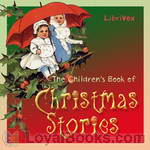 The Children's Book of Christmas Stories
The Children's Book of Christmas Stories
Many librarians have felt the need and expressed the desire for a select collection of children's Christmas stories in one volume. This book claims to be just that and nothing more. Each of the stories has already won the approval of thousands of children, and each is fraught with the true Christmas spirit. It is hoped that the collection will prove equally acceptable to parents, teachers, and librarians. | |
 Good Cheer Stories Every Child Should Know
Good Cheer Stories Every Child Should Know
This charming book has many stories that deal mostly with the holiday of Thanksgiving, perfectly suited for family listening and reading. and gathers in one volume tales of tasty turkeys, festive parties, generous gestures, and holiday cheer. The stories featured include works by such writers as Harriet Beecher Stowe, George Eliot, Nathaniel Hawthorne, and others. So if you want to listen to some great stories that bring out gratitude for life and a thanksgiving attitude, here are a bunch of the best. | |
By: Augusta Groner (1850-1929) | |
|---|---|
 Case Of The Registered Letter
Case Of The Registered Letter
A man is found shot dead and the man to whom all evidence points insists he is innocent. | |
By: Barbara Baynton (1857-1929) | |
|---|---|
 Bush Studies
Bush Studies
Bush Studies is a short story collection published in London in 1902. Baynton presents a grimly realist view of bush life in Australia for women in colonial Australia. She wrote in response to Henry Lawson's romantic depiction of bush life during the same era. | |
By: Baroness Emmuska Orczy (1865-1947) | |
|---|---|
 Castles in the Air
Castles in the Air
Baroness Emma Orczy (full name: Emma (”Emmuska”) Magdolna Rozália Mária Jozefa Borbála Orczy de Orczi) (September 23, 1865 – November 12, 1947) was a British novelist, playwright and artist of Hungarian noble origin. She was most notable for her series of novels featuring the Scarlet Pimpernel. Castles in the Air, a short novel or perhaps more like a collection of short stories with memories of a French rogue in the early 19th century Paris, was published in 1921 and about it I quote from the foreword: In very truth my good friend Ratichon is an unblushing liar, thief, a forger–anything you will; his vanity is past belief, his scruples are non-existent... | |
By: Barry Pain (1864-1928) | |
|---|---|
 Eliza
Eliza
A gentle, yet deliciously humourous series of anecdotes following the life of the main character and his wife, Eliza. | |
 Stories without Tears
Stories without Tears
This is a collection of short stories by Barry Pain, first published in 1914. While generally best-known for his horror and supernatural fiction, Barry Pain turns to general fiction, mystery, and humour in this volume. Sorely needed in 1914, one might say, and perhaps also sorely needed today. - Summary by Carolin | |
 Stories in Grey
Stories in Grey
This is a collection of short stories by Barry Pain. Pain was well-known in his time for his supernatural and horror stories. This collection contains 15 interesting examples of his work. - Summary by Carolin | |
By: Beatrix Potter (1866-1943) | |
|---|---|
 Great Big Treasury of Beatrix Potter
Great Big Treasury of Beatrix Potter
Whether you're a parent or a child, a young reader or an older one, the Great Big Treasury of Beatrix Potter is indeed just that – a treasure chest of delightful, charming little stories full of animals and people. Beatrix Potter today has spawned a whole industry of merchandise, games and theme parks, but the stories remain as fresh and sparkling as they were when they first came out in 1901. The Great Big Treasury contains three collections compiled into one enchanting volume - The Giant Treasury of Peter Rabbit, Further Tales of Peter Rabbit and The Giant Treasury of Beatrix Potter... | |
 Collection of Beatrix Potter Stories
Collection of Beatrix Potter Stories
What can we say about the delightful Beatrix Potter stories? Starting with the naughty Peter Rabbit and his mis-adventures, progressing through The Tale of Mrs. Tiggy-Winkle whose funny name is just the start of the interesting things about her, then expounding on the Tale of Jemima Puddle-Duck, and many many more, these stories are all gems of the art of story telling. This is your chance to enjoy reading them aloud and recording them for children to enjoy listening to in the years and decades to come. Aren't you curious to learn more about the Fierce Bad Rabbit? Or the Tale of the Two Bad Mice? This is your chance to read aloud. And remember to have fun !! | |
By: Bram Stoker (1847-1912) | |
|---|---|
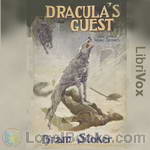 Dracula's Guest and other Weird Tales
Dracula's Guest and other Weird Tales
Nine Gothic Horror Tales by the author of Dracula. Note : These tales are not for the squeamish!!! 0r a dark windy night. | |
By: Bret Harte (1837-1902) | |
|---|---|
 Selected Stories
Selected Stories
Bret Harte (1837–1902) was an American author and poet, best remembered for his accounts of pioneering life in California. | |
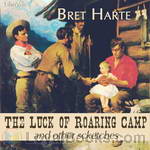 The Luck Of Roaring Camp And Other Sketches
The Luck Of Roaring Camp And Other Sketches
Bret Harte (1836–1902) was an American author and poet, best remembered for his accounts of pioneering life in California.... He moved to California in 1853, later working there in a number of capacities, including miner, teacher, messenger, and journalist. He spent part of his life in the northern California coastal town of Union (now known as Arcata), a settlement on Humboldt Bay that was established as a provisioning center for mining camps in the interior.... In 1868 he became editor of The Overland Monthly, another new literary magazine, but this one more in tune with the pioneering spirit of excitement in California... | |
 Mrs. Skagg's Husbands and Other Stories
Mrs. Skagg's Husbands and Other Stories
A collection of short stories set in the American West at the end of the 19th century. | |
By: C.V. Tench | |
|---|---|
 Astounding Stories 01, January 1930
Astounding Stories 01, January 1930
In January of 1930 a new magazine with a flashy color cover appeared on newsstands, Astounding Stories of Super-Science. Filled with stories of adventure, sometimes with only a tinge of science, this magazine was to host and nurture many science fiction giants like Murray Leinster and Ray Cummings and would help inspire many of the writers of the "Golden Age of Science Fiction". This inaugural issue includes stories by Murray Leinster, Ray Cummings, S. P. Meek, Victor Rousseau and others. | |
By: Cal Stewart (1856-1919) | |
|---|---|
 Uncle Josh's Punkin Centre Stories
Uncle Josh's Punkin Centre Stories
A collection of comedic short stories from the perspective of an old country man. | |
By: Carl Sandburg (1878-1967) | |
|---|---|
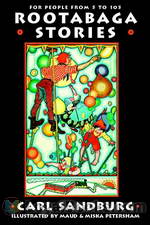 Rootabaga Stories
Rootabaga Stories
Carl Sandburg is beloved by generations of children for his Rootabaga Stories and Rootabaga Pigeons (which is not in the public domain), a series of whimsical, sometimes melancholy stories he originally created for his own daughters. The Rootabaga Stories were born of Sandburg’s desire for “American fairy tales” to match American childhood. He felt that the European stories involving royalty and knights were inappropriate, and so populated his stories with animals, skyscrapers, trains, corn fairies, and other colorful characters. | |
By: Carroll Watson Rankin (1864-1945) | |
|---|---|
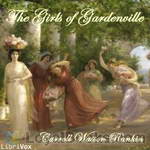 The Girls of Gardenville
The Girls of Gardenville
It is pleasant to have another book about a group of merry, natural girls, who have the attractions of innocence and youthful faults. "The Sweet Sixteen" Club made fudge, and went on picnics, and behaved just as jolly, nice maidens should. (The Outlook, vol. 82, Mar. 24, 1906) | |
By: Cecil Henry Bompas | |
|---|---|
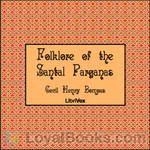 Folklore of the Santal Parganas
Folklore of the Santal Parganas
This is an intriguing collection of folklore from the Santal Parganas, a district in India located about 150 miles from Calcutta. As its Preface implies, this collection is intended to give an unadulterated view of a culture through its folklore. It contains a variety of stories about different aspects of life, including family and marriage, religion, and work. In this first volume, taken from Part I, each story is centered around a particular human character. These range from the charmingly clever (as in the character, The Oilman, in the story, “The Oilman and His Sons”) to the tragically comical (as in the character, Jhore, in the story “Bajun and Jhore”)... | |
By: Charles B. Cory (1857-1921) | |
|---|---|
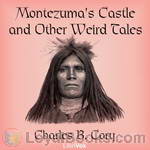 Montezuma's Castle and Other Weird Tales
Montezuma's Castle and Other Weird Tales
This is a collection of weird tales inspired from the natural history expeditions of the author, an independently wealthy bird collector, Olympic golfer, writer of many books on birds of the world, and, as evidenced in these pages, a fine storyteller to boot. | |
By: Charles Dickens | |
|---|---|
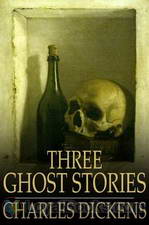 Three Ghost Stories
Three Ghost Stories
As a gifted writer with a strong interest in supernatural phenomena, Charles Dickens produced a string of ghost stories with enduring charm. Three of them are presented here, of which The Signal Man is one of the best known. Though quite different from his most celebrated realistic and humorous critical novels, these ghost stories, Gothic and grotesque as they are, are of good portrayal, and worth a read/listen. Summary by Vivian Chan | |
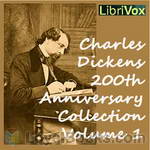 Charles Dickens 200th Anniversary Collection Vol. 1
Charles Dickens 200th Anniversary Collection Vol. 1
The Charles Dickens 200th Anniversary Collection comprises short works - fiction, essays, poetry, letters, magazine articles and speeches - and each volume will be a pot pourri of all genres and periods of his writing. This first volume is released on Dickens' 200th birthday, February 7th 2012. Further volumes will follow during the anniversary year.Volume 1 includes short stories including, amongst others, The Holly Tree, the first part of Holiday Romance and three pieces from Mugby Junction.Some... | |
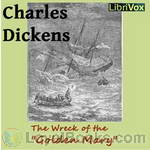 The Wreck of the Golden Mary
The Wreck of the Golden Mary
A short story of a ship wreck in 1851 trying to round Cape Horn on its way to the California gold fields. Poignant and well written. ( | |
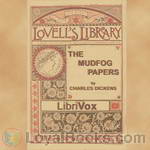 Mudfog and Other Sketches
Mudfog and Other Sketches
The Mudfog Papers was written by Victorian era novelist Charles Dickens and published from 1837–38 in the monthly literary serial Bentley's Miscellany, which he then edited. They were first published as a book as 'The Mudfog Papers and Other Sketches. The Mudfog Papers relates the proceedings of the fictional 'The Mudfog Society for the Advancement of Everything', a Pickwickian parody of the British Association for the Advancement of Science founded in York in 1831, one of the numerous Victorian learned societies dedicated to the advancement of Science... | |
By: Charles G. D. Roberts (1860-1943) | |
|---|---|
 Hoof and Claw
Hoof and Claw
These 14 short stories about animals are superb examples of Roberts smooth storytelling style. Knows as the Father of Canadian Poetry, he loved to also write in prose about the wilderness and the personalities of the animals to be found there as well as the exciting things they are capable of. Bears, White Wolves, Lynxs, hawks and yes, cattle are just a few of the animals written about. | |
By: Charles Knight (1791-1873) | |
|---|---|
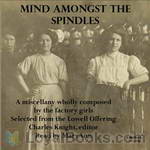 Mind Amongst the Spindles
Mind Amongst the Spindles
Lowell Massachusetts was founded in the 1820s as a planned manufacturing center for textiles and is located along the rapids of the Merrimack River, 25 miles northwest of Boston. By the 1850s Lowell had the largest industrial complex in the United States. The textile industry wove cotton produced in the South. In 1860, there were more cotton spindles in Lowell than in all eleven states combined that would form the Confederacy. Mind Amongst the Spindles is a selection of works from the Lowell Offering, a monthly periodical collecting contributed works of poetry and fiction by the female workers of the textile mills... | |
By: Charles Waddell Chesnutt (1858-1932) | |
|---|---|
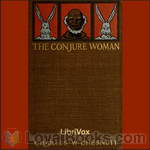 The Conjure Woman
The Conjure Woman
Published in 1899 by Houghton Mifflin, Chesnutt's first book, The Conjure Woman, was a collection of seven short stories, all set in "Patesville" (Fayetteville), North Carolina. While drawing from local color traditions and relying on dialect, Chesnutt's tales of conjuring, a form of magic rooted in African hoodoo, refused to romanticize slave life or the "Old South." Though necessarily informed by Joel Chandler Harris's popular Uncle Remus stories and Thomas Nelson Page's plantation fiction, The Conjure Woman consciously moved away from these models, instead offering an almost biting examination of pre- and post-Civil War race relations... | |
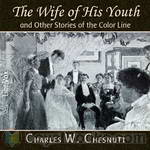 The Wife of His Youth and Other Stories of the Color Line
The Wife of His Youth and Other Stories of the Color Line
Published in 1899, The Wife of His Youth and Other Stories of the Color Line is a collection of narratives that addresses the impact of Jim Crow laws on African Americans and white Americans of the South. Many of Chesnutt's characters are of mixed-race ancestry which sets them apart for a specific yet degrading kind of treatment from blacks and whites. These stories examine particularly how life in the South was informed through a legacy of slavery and Reconstruction—how members of the “old dominion” desperately struggled to breath life into the corpse of an antebellum caste system that no longer defined the path and direction in which this country was headed... | |
By: Clara Dillingham Pierson (1868-1952) | |
|---|---|
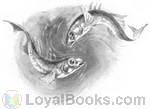 Among the Pond People
Among the Pond People
Lovely book for children written by teacher and naturalist Clara Dillingham Pierson. This book in the "Among the People" series explores the animal inhabitants of a pond. The beautiful writing brings the pond creatures into being in the reader's imagination and allows them a glimpse of the mysterious lives being carried out above and below the water's surface. | |
By: Cyrus Macmillan | |
|---|---|
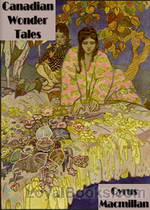 Canadian Wonder Tales
Canadian Wonder Tales
This is a collection of folk tales originating in Canada, some from aboriginal oral tradition and others due to early French, Scottish, Irish and British colonists. They are presented as “fables” though many are without obvious moral. | |
By: D. H. Lawrence (1885-1930) | |
|---|---|
 The Prussian Officer and Other Stories
The Prussian Officer and Other Stories
The collection of short stories – of which The Prussian Officer is one – was Lawrence’s first such book. A German officer and his orderly are the focus of the piece and, while socially the superior of his orderly, the officer demonstrates his is the distinctly baser character. (Introduction by Cathy Barratt) | |
By: Dandin (6th Century) | |
|---|---|
 Twenty Two Goblins
Twenty Two Goblins
These 22 stories are told by the Goblin to the King Vikram. King Vikram faces many difficulties in bringing the vetala to the tantric. Each time Vikram tries to capture the vetala, it tells a story that ends with a riddle. If Vikram cannot answer the question correctly, the vampire consents to remain in captivity. If the king answers the question correctly, the vampire would escape and return to his tree. In some variations, the king is required to speak if he knows the answer, else his head will burst... | |
By: Dashiell Hammett (1894-1961) | |
|---|---|
 Tenth Clew and Other Continental Op Stories
Tenth Clew and Other Continental Op Stories
Biographer Nathan Ward has called “The Tenth Clew” Dashiell Hammett’s “first real jewel of a story.” In it, Hammett’s nameless Continental Detective Agency operative survives being knocked unconscious and dumped in San Francisco Bay. This kind of action was what his Black Mask magazine editors and readers were asking for, and Hammett somewhat grudgingly obliged them with continuing stories of the Continental Op. | |
By: David Cory (1872-1966) | |
|---|---|
 Jumble Book
Jumble Book
This is a lovely collection of short stories and poems some well known others not so well known. Something to appeal to everyone. | |
By: E. Boyd Smith (1860-1943) | |
|---|---|
 Selected Works of E. Boyd Smith
Selected Works of E. Boyd Smith
A sampling of the children's books written and illustrated by E. Boyd Smith. The first story is Mr. Smith's version of the Story of Noah's Ark. He then tells us the story of Pocahontas and Captain John Smith. Next we join a hen as she hatches her chicks and their life on the farm. We then go on several adventures with Bob and Betty as they visit their Uncle's farm, go to the seashore and learn about ships, and then learn about railroads and trains. Our last story is a brief history of the United States up until the time just after World War I. | |